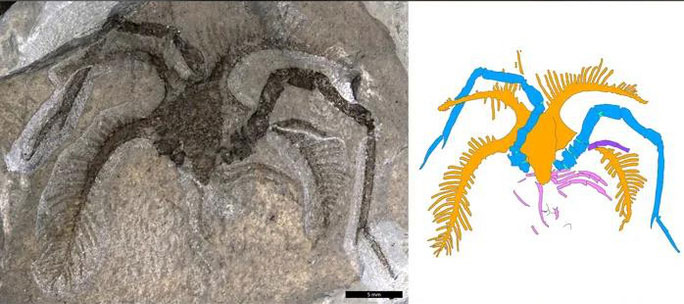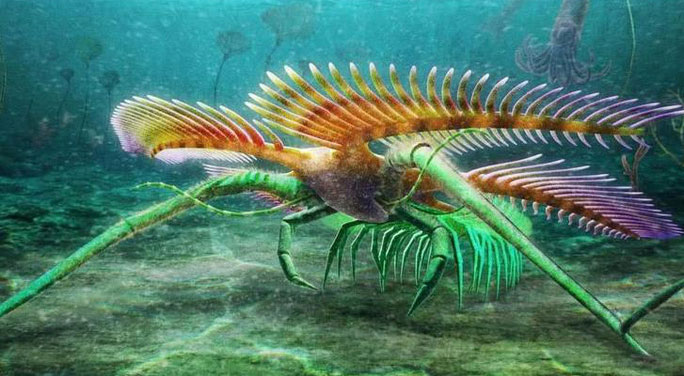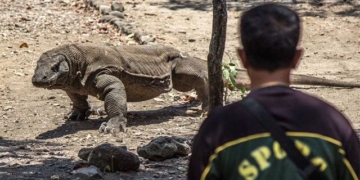A creature resembling an extraterrestrial being from movies has been discovered in a remarkably intact form, which is quite absurd considering it is a soft-bodied animal.
According to Science Alert, the new fossil species, named Tomlinsonus dimitrii, was uncovered near the eastern shore of Lake Simcoe in Southern Ontario, Canada, a renowned “fossil hotspot.”
This creature is relatively small, measuring only 6 cm in length, but has an extremely bizarre appearance: it lacks eyes, has a shield-like structure on its head adorned with intricate patterns, two curved horns covered in soft, feather-like spines, and a segmented body reminiscent of modern arthropods such as insects and spiders.

The absurdly perfect fossil of an Ordovician monster. (Photo: ROM)
Among its appendages, there is an unusual pair that is exceptionally long, attached beneath its head, with two “feet” at the end of each limb.
This creature belongs to an extinct group of arthropods that lived approximately 450 million years ago, during the Ordovician period, as stated by a team of scientists led by researcher Joseph Moysiuk from the Royal Ontario Museum (ROM) in Canada.
However, the most shocking aspect of this small creature is not its bizarre shape, but how it appeared perfectly preserved in the fossil record, as if it had just “teleported” from 450 million years ago to the modern world. This is due to the fact that it is a soft-bodied animal.

The creature digitally reconstructed. (Photo: ROM)
Typically, only hard materials can fossilize, such as dinosaur bones or eggshells. The preservation of soft tissues is extremely rare worldwide, and complete preservation like this case is almost unbelievable.
Researchers believe that this exceptional case could only have occurred due to an unusual, catastrophic event that rapidly “frozen” the organism, likely a sudden mudflow, followed by layers of thick sediment continuously accumulating. This is similar to how the shocking fossilized remains in Pompeii were formed—individuals covered by volcanic ash in an instant.
The study has just been published in the Journal of Paleontology.





















































